Contents
A Quick Guide on How to Clean Car Engine at Home
How to clean car engine at home without taking help from a cleaning professional?
Cleaning your car engine is not difficult, but it can be time-consuming.
If you do not have the proper tools, or if you do not have access to a car wash facility, it may be difficult for you to clean your own engine.
You should always choose professional cleaning services for this task.
Still, if you want to do it yourself, here are some tips:
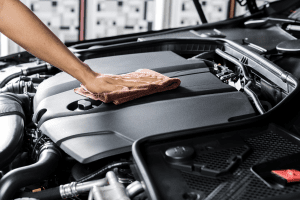
The First Step of How to Clean Car Engine at Home: Keep the Engine Off
The first thing you need to do is turn off the engine. This prevents any damage if water enters the engine and causes a fire.
Also, it makes sure that it’s safe for you to do this step.
The second thing you should do is make sure your car is in park mode so that there are no moving parts that could get damaged by water while cleaning.
Set up Your Work Area
- Cover your car engine with a plastic sheet or tarp.
- Cover the ground with a tarp or plastic sheet.
- Place your cleaning tools and supplies on a table, along with a trash can near your work area.
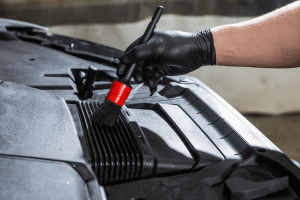
Spray Down the Engine with a Degreaser
Degreaser is a detergent that cleans away grease, oil, and dirt from your car’s engine. If you don’t use high-quality oil such as Amsoil, there may be more dirt on your car engine. You should also use oil filters when applying.
You can buy it from any auto parts store or online if you don’t want to buy it in bulk.
You’ll need to know how many degreasers to use and how much water. Make sure not to get any of this stuff on yourself because it will burn!
To protect yourself from getting wet while cleaning, wear rubber gloves and don’t wear clothes that are too tight or lose fitting. That’s important for safety reasons!
How to Clean Car Engine at Home by Scrubbing and Cleaning the Engine
Here is how to clean car engine at home by scrubbing and cleaning the Engine:
- Start by using a toothbrush to remove any dirt.
- Next, clean the engine using a degreaser.
- Now use a brush to scrub off any remaining grime and dirt from the car’s exterior surfaces.
- Finally, use a cloth or rag to wipe down all of your cleaning efforts so that they’re ready for storage in their own container!
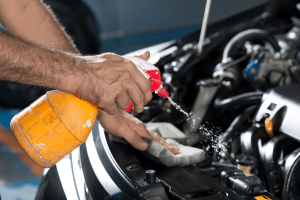
How to Clean Car Engine at Home by Rinsing Down the Engine
Here is how to clean car engine at home by rinsing down the engine:
Rinse off any dirt and grime on your car’s engine using a garden hose or power washer.
Make sure you don’t damage any parts of your car while cleaning it!
Dry Your Car Engine: An Important Step of How to Clean Car Engine at Home
Now that your engine is clean, it’s time to dry it. This is a very important step of how to clean car engine at home.
The best way to do this is with a clean, dry cloth.
Don’t use heat sources like hair dryers; you don’t want to destroy any of the gaskets or seals around your engine if they’re still wet.
Also, don’t use a vacuum cleaner: you need all of the moisture out before moving on, and leaving behind any residue in there might cause issues later on down the road.
Finally, make sure not to use compressed air on your vehicle’s engine because this could damage parts inside!
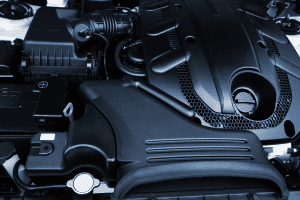
Apply Lubricant or Oil to Moving Parts
Once you’ve cleaned the engine, apply a lubricant or oil to moving parts.
Lubricants reduce friction between two surfaces. Oil is an example of this type of substance and can be found in many vehicles, as well as industrial applications like engines and machines.
Apply petroleum-based products such as WD-40 or Vaseline to your car’s engine before turning it on again to keep everything running smoothly until you’re ready to head out for another adventure.
Ensure You Don’t Damage Any Parts of Your Car When Cleaning
When you’re cleaning your engine, it’s important to make sure that you don’t damage any parts of your car.
You don’t want to crack the bottom of the transmission or knock out an oil pan because you were trying to clean them with a wire brush.
Therefore, I recommend you use a high-quality steam cleaner for this job.
And if there are any areas that won’t be touched by water, then use a vacuum instead of a pressure washer so as not to put unnecessary stress on those areas either.
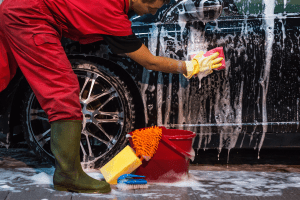
How to clean car engine without water
Cleaning a car engine without water can be a challenging task, as water is commonly used to remove dirt and debris.
However, there are alternative methods you can employ to clean your car engine without water.
Here’s a step-by-step guide:
- Gather the necessary supplies: You’ll need a few items to clean the engine without water. These include a vacuum cleaner with a brush attachment, a soft-bristle brush or toothbrush, a microfiber cloth, a degreaser or engine cleaner spray, and a dry air compressor (optional).
- Prepare the engine: Ensure that the engine is cool before you begin cleaning. It’s recommended to disconnect the battery or cover sensitive electrical components to avoid any damage. Use plastic bags or waterproof covers to protect areas such as the alternator, fuse box, and intake.
- Vacuum loose debris: Use the vacuum cleaner with a brush attachment to remove loose dirt, leaves, and debris from the engine bay. Be gentle to avoid damaging any components.
- Apply degreaser or engine cleaner: Spray a degreaser or engine cleaner onto the dirty areas of the engine, focusing on greasy spots, oil stains, and built-up grime. Follow the instructions on the product for the appropriate dwell time.
- Agitate with a brush: Use a soft-bristle brush or toothbrush to gently scrub the engine surfaces, paying attention to heavily soiled areas. This helps to loosen and remove dirt and grime.
- Wipe down with a microfiber cloth: Use a clean microfiber cloth to wipe away the degreaser or engine cleaner, along with the loosened dirt and grime. Repeat this step until the cloth comes away clean.
- Dry with a dry air compressor (optional): If you have access to a dry air compressor, you can use it to blow away any remaining debris or moisture. Ensure that you use low pressure and keep a safe distance from sensitive components to prevent damage.
- Reconnect battery and remove covers: Once you’ve finished cleaning and the engine is dry, reconnect the battery if you had disconnected it earlier. Remove any covers or plastic bags you used to protect sensitive components.
It’s important to note that cleaning the engine without water may not provide the same level of cleanliness as using water-based methods.
If your engine is heavily soiled or greasy, it’s generally recommended to consult a professional or use water-based cleaning methods for a more thorough cleaning.
How to clean car engine inside
Cleaning the inside of a car engine refers to the internal components and systems.
It is generally not recommended for inexperienced individuals to clean the inside of the engine themselves, as it requires specialized knowledge and tools. Internal engine cleaning is typically performed by professionals or automotive technicians.
However, if you’re looking for general maintenance tips to keep your engine running smoothly, here are a few:
- Regular oil changes: Follow the manufacturer’s recommendations for oil change intervals and use the recommended oil type. Regular oil changes help keep the engine lubricated and free from contaminants.
- Fuel system maintenance: Use high-quality fuel and consider using fuel additives periodically to help keep the fuel system clean and prevent the buildup of deposits.
- Air filter replacement: Replace the air filter according to the manufacturer’s recommendations. A clean air filter ensures proper airflow to the engine and prevents dust and debris from entering.
- Coolant system maintenance: Check the coolant level regularly and follow the recommended coolant change intervals. This helps maintain optimal engine temperature and prevents overheating.
- Drive the car regularly: Regularly driving your car helps keep the engine components in good working condition. Short trips or long periods of inactivity can lead to issues such as moisture buildup or fuel degradation.
- Listen for abnormal sounds: Pay attention to any unusual noises coming from the engine, such as knocking or grinding sounds. If you notice anything out of the ordinary, it’s best to have a professional inspect and diagnose the issue.
Remember, the internal components of a car engine are intricate and require specific knowledge and expertise to clean or repair.
If you have any concerns about the condition of your engine, it’s recommended to consult a qualified mechanic or technician.
Car engine wash service near me
You can find car engine wash services near you by using the following methods:
- Search online: Use search engines like Google, Bing, or Yahoo and search for a car engine wash service near you. The search results should provide you with a list of nearby car wash facilities that offer engine cleaning services.
- Mobile apps: Utilize mobile applications such as Yelp, Google Maps, or car-specific apps that provide information about local car wash services. These apps often include user reviews, ratings, and contact information for each establishment.
- Local directories: Check your local business directories, both online and offline, such as Yellow Pages or the local phone book, which may have listings for car wash services in your area.
- Ask for recommendations: Seek recommendations from friends, family, or colleagues who have had their car engines cleaned.
- They might be able to provide you with suggestions based on their personal experiences.
Once you have a list of car wash facilities near you, you can contact them directly to inquire about their engine cleaning services, pricing, and availability.
Remember to clarify any specific requirements or concerns you may have regarding the cleaning process before making a decision.
How to clean oil from engine bay
Cleaning oil spills or leaks from the engine bay requires prompt attention to prevent damage and maintain a clean engine.
Here’s a step-by-step guide to clean oil from the engine bay:
- Safety precautions: Ensure that the engine is cool before starting the cleaning process to avoid any burns. It’s also a good idea to disconnect the battery or cover sensitive electrical components to prevent any electrical hazards.
- Absorb excess oil: Use an absorbent material like cat litter, baking soda, or a commercial oil absorbent product to soak up the excess oil. Sprinkle the absorbent material over the oil spill and let it sit for a few minutes to absorb the oil. Once absorbed, use a broom, brush, or dustpan to remove the material from the engine bay.
- Apply a degreaser: Spray a degreaser or engine cleaner specifically designed to remove oil and grease onto the affected areas. Ensure that the degreaser is safe to use on engine components by checking the product instructions. Allow the degreaser to sit for the recommended dwell time mentioned on the product label.
- Agitate with a brush: Use a soft-bristle brush or a toothbrush to gently scrub the oil-stained areas. Focus on areas with stubborn stains or heavy buildup. This helps to loosen and break up the oil residue.
- Rinse with water (optional): If you have access to a water source and you’re confident that it’s safe to use water in the engine bay, you can rinse off the degreaser and remaining oil residue with a gentle stream of water. Be cautious not to spray directly onto electrical components. If you’re uncertain about using water, skip this step.
- Wipe and dry: Use a clean microfiber cloth or a towel to wipe away the degreaser and any remaining oil residue. Ensure that the engine bay is thoroughly dry before starting the engine.
- Dispose of waste properly: Dispose of any used absorbent material, degreaser, or contaminated water according to local regulations and environmental guidelines.
It’s worth mentioning that if the oil leak is severe or you’re unsure about cleaning it yourself, it’s best to consult a professional mechanic to identify and fix the underlying issue.
They can also provide expert advice on safely cleaning the engine bay.
Car engine cleaner liquid
There are various car engine liquids available on the market that are specifically designed to clean and degrease engine components.
These engine cleaners can help remove dirt, grease, oil, and grime from the engine bay.
When choosing an engine cleaner, consider the following factors:
- Compatibility: Ensure that the engine cleaner you select is compatible with the type of engine you have. Different engines may have specific requirements or restrictions on the type of cleaner that can be used.
- Safety: Look for an engine cleaner that is safe to use on engine components and will not cause damage or corrosion. Consider whether the cleaner is non-toxic, non-flammable, and environmentally friendly.
- Effectiveness: Read reviews or product descriptions to gauge the effectiveness of the cleaner. Look for a product that is known for its ability to remove tough grease and grime.
- Application method: Consider the application method that is most convenient for you. Engine cleaners typically come in spray bottles or concentrated forms that need to be mixed with water. Choose a product that suits your preferences and ease of use.
- Instructions: Ensure that the cleaner comes with clear instructions on how to use it. Follow the recommended dilution ratios, application techniques, and safety precautions mentioned by the manufacturer.
Some popular engine cleaner brands include Gunk, Purple Power, CRC, and Meguiar.
It’s always a good idea to read product reviews, check customer ratings, and compare different options to find the most suitable engine cleaner for your needs.
Before using any engine cleaner, it’s important to follow the instructions provided by the manufacturer to ensure safe and effective use.
Additionally, take precautions to protect sensitive electrical components, cover exposed areas, and avoid spraying the cleaner directly onto these components.
FAQs
Q. What can I use at home to clean my engine? A. When cleaning your engine at home, you can use a few common household items. These include a vacuum cleaner with a brush attachment, a soft-bristle brush or toothbrush, a microfiber cloth, a degreaser or engine cleaner spray, and optionally, a dry air compressor for drying. Q. Is it safe to spray your engine with water? A. It can be safe to spray water on the engine, but precautions should be taken. Ensure that the engine is cool before spraying water to avoid thermal shock. Cover sensitive electrical components, such as the alternator and fuse box, with plastic bags or waterproof covers. Use a gentle spray, avoid high-pressure water, and be mindful of electrical connections. Q. Can I clean my car engine myself? A. Yes, you can clean your car engine yourself. However, it's important to have some knowledge of engine components and follow proper safety precautions. Using the appropriate cleaning products and techniques will help you avoid damaging sensitive parts. If you're unsure or uncomfortable, it's best to consult a professional. Q. What to cover when cleaning an engine? A. When cleaning an engine, it's advisable to cover sensitive electrical components, such as the alternator, fuse box, and intake. Use plastic bags or waterproof covers to protect these areas from water or cleaning products. Additionally, ensure the engine is cool, disconnect the battery (if desired), and cover any exposed air filters or intake openings. Q. Is steam cleaning an engine safe? A. Steam cleaning an engine can be effective for removing dirt and grime, but it should be done with caution. High-pressure steam can potentially force water into electrical connections and sensitive components, causing damage. If you choose to steam clean your engine, be sure to use low pressure, keep a safe distance from sensitive parts, and avoid spraying directly onto electrical components. It's often recommended to consult a professional for steam cleaning.
Conclusion
Cleaning your car engine can be a chore, but it doesn’t have to be.
We hope this guide has helped you understand how to clean car engine at home and why it is so important.
Want to Start Amsoil Home Business? Click here.